Laser eye surgery has revolutionized the field of vision correction, offering various procedures designed to reduce dependence on glasses and contact lenses. These surgeries utilize precise laser technology to reshape the cornea, improving how light is focused onto the retina.
Different Types of Laser Eye Surgery
Laser eye surgery encompasses several advanced procedures designed to correct vision issues like myopia (nearsightedness), hyperopia (farsightedness), and astigmatism. Each type of laser eye surgery has its benefits and considerations, including recovery time and suitability based on individual eye conditions. Consulting with an eye specialist is essential to determine the most appropriate procedure for achieving optimal vision correction.
LASIK Eye Surgery
LASIK (Laser-Assisted In Situ Keratomileusis) eye surgery is a popular and highly effective procedure used to correct common vision problems such as myopia (nearsightedness), hyperopia (farsightedness), and astigmatism. The procedure involves creating a thin flap in the cornea using either a microkeratome blade or a femtosecond laser. Once the flap is lifted, an excimer laser is used to reshape the underlying corneal tissue, precisely correcting the refractive error and allowing light to be properly focused onto the retina. The corneal flap is then carefully repositioned, acting as a natural bandage as it heals. LASIK is known for its quick recovery time, with many patients experiencing improved vision almost immediately after the procedure and returning to normal activities within a day or two. The entire surgery typically takes less than 30 minutes per eye and is performed under local anesthesia, ensuring a comfortable experience for the patient. The benefits of LASIK include the significant reduction or complete elimination of the need for glasses or contact lenses, making it a life-changing option for those seeking greater visual freedom. However, it is essential to have a thorough consultation with an eye specialist to determine if LASIK is the right choice based on individual eye health and vision needs.
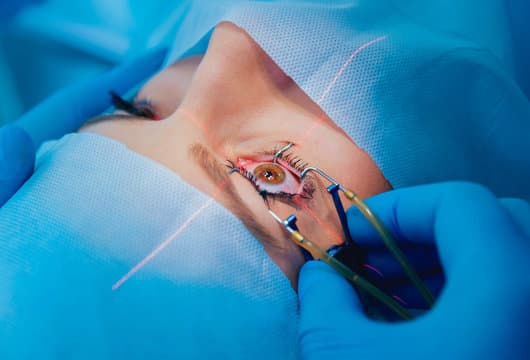
LASEK Eye Surgery
LASEK (Laser-Assisted Sub-Epithelial Keratectomy) eye surgery is a refractive procedure used to correct vision problems such as myopia (nearsightedness), hyperopia (farsightedness), and astigmatism. It combines elements of both LASIK and PRK techniques. During LASEK, the surgeon creates a thin epithelial flap using an alcohol solution to loosen the top layer of the cornea. The flap is then gently lifted, and an excimer laser is used to reshape the underlying corneal tissue, correcting the refractive error. Unlike LASIK, which involves creating a thicker flap, LASEK's thinner flap makes it suitable for patients with thinner corneas or those who are at higher risk for complications.
After the corneal reshaping, the epithelial flap is repositioned, and a soft contact lens is placed over the eye to protect it during the healing process. The recovery time for LASEK is typically longer than LASIK, with patients experiencing discomfort and blurred vision for a few days. However, the visual outcomes are comparable to LASIK, with many patients achieving significant improvement in vision. LASEK offers a valuable alternative for individuals who may not be ideal candidates for LASIK, providing effective vision correction while preserving more of the corneal structure. As always, consulting with an eye specialist is essential to determine the most suitable procedure based on individual eye health and vision needs.
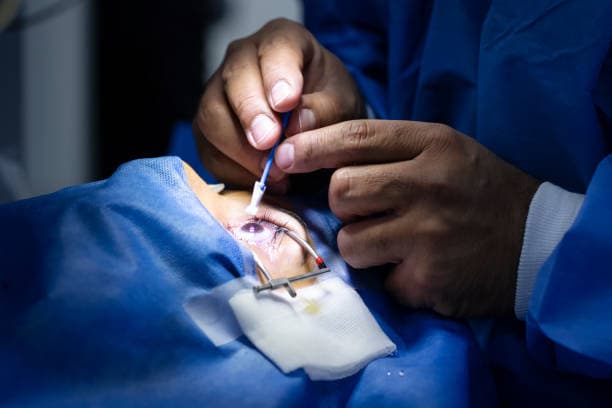
SMILE Eye Surgery
SMILE (Small Incision Lenticule Extraction) eye surgery is an advanced, minimally invasive procedure designed to correct myopia (nearsightedness) and astigmatism. Unlike traditional LASIK, SMILE does not involve creating a corneal flap. Instead, the surgeon uses a femtosecond laser to create a small, lens-shaped piece of tissue (lenticule) within the cornea. This lenticule is then removed through a tiny incision, typically less than 4mm, to reshape the cornea and correct the refractive error.
The benefits of SMILE include less disruption to the corneal biomechanics, reduced risk of dry eyes, and faster recovery times. Since no large flap is created, the procedure is ideal for individuals with thinner corneas or those involved in contact sports and other high-impact activities. Patients typically experience minimal discomfort during and after the surgery, with vision improvements noticeable within a few days.
SMILE offers a safe, effective, and precise method for vision correction, providing an excellent alternative to traditional LASIK and PRK procedures. As always, consulting with an eye specialist is crucial to determine the most suitable treatment based on individual eye health and vision correction needs.
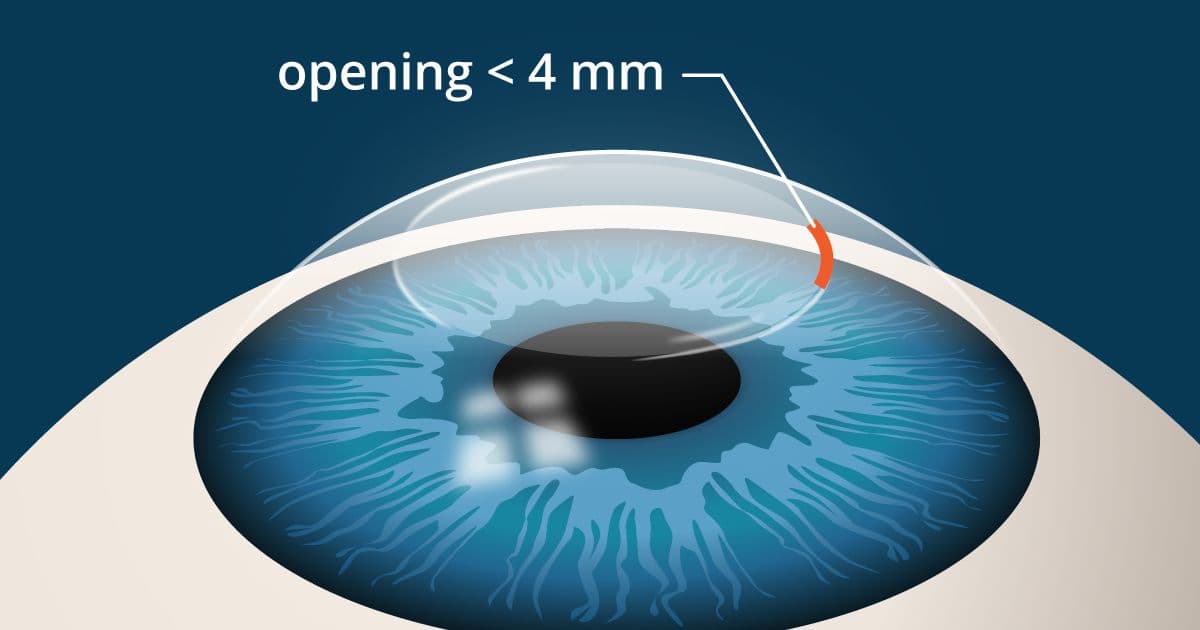
Photorefractive Keratectomy
Photorefractive Keratectomy (PRK) is a type of laser eye surgery used to correct vision problems such as myopia (nearsightedness), hyperopia (farsightedness), and astigmatism. PRK was the first type of laser eye surgery developed for vision correction and remains a popular option, especially for individuals with thinner corneas or those not suited for LASIK. During the PRK procedure, the outer layer of the cornea (epithelium) is removed entirely to expose the underlying corneal tissue. An excimer laser is then used to reshape the cornea by removing precise amounts of tissue, thereby correcting the refractive error.
Unlike LASIK, which involves creating a corneal flap, PRK does not require any incisions into the cornea, making it a less invasive option. After the laser reshaping, the epithelial cells naturally regenerate over the next few days. A protective contact lens is placed on the eye to facilitate healing and reduce discomfort during this period. The recovery process for PRK is generally longer compared to LASIK, with most patients experiencing several days of blurred vision and discomfort. However, the long-term visual outcomes of PRK are comparable to those of LASIK, offering significant improvement in vision and reducing the need for glasses or contact lenses. Consulting with an eye specialist can help determine if PRK is the most suitable option based on individual eye health and vision correction needs.

Refractive lens exchange
Refractive Lens Exchange (RLE), also known as Clear Lens Extraction (CLE) or Lens Replacement Surgery, is an advanced procedure designed to correct refractive errors by replacing the eye's natural lens with an artificial intraocular lens (IOL). This surgery is similar to cataract surgery but is performed primarily to address vision issues such as myopia (nearsightedness), hyperopia (farsightedness), and presbyopia (age-related loss of near vision). During the RLE procedure, the surgeon makes a small incision in the cornea, removes the natural lens, and implants a custom-made IOL that provides clear, focused vision.
One of the significant benefits of RLE is its ability to correct severe refractive errors that are beyond the range treatable by laser eye surgeries like LASIK or PRK. It is particularly beneficial for individuals over the age of 40, who may be experiencing presbyopia or early cataract development. RLE can eliminate the need for glasses or contact lenses, offering a permanent solution for vision correction.
The recovery time for RLE is relatively short, with most patients resuming normal activities within a few days. However, as with any surgical procedure, there are potential risks, including infection, inflammation, and lens dislocation. Consulting with an eye specialist is essential to determine if RLE is the most suitable option based on individual eye health and vision correction needs.
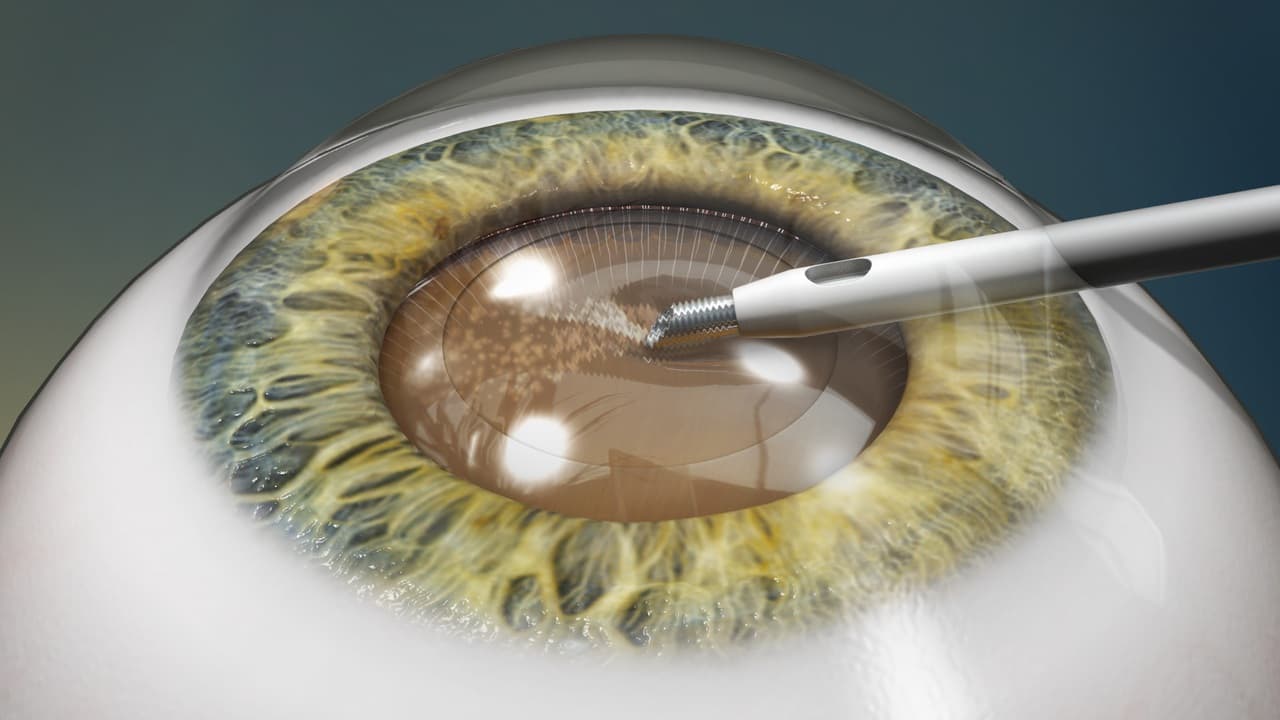
Intraocular Lens Surgery
Intraocular lens (IOL) surgery is a sophisticated procedure aimed at replacing the eye's natural lens with an artificial one, primarily used to correct vision issues such as cataracts and severe refractive errors. During the surgery, a small incision is made in the cornea, and the cloudy or dysfunctional natural lens is carefully removed. A custom-made intraocular lens, tailored to the patient's vision needs, is then implanted in its place. The IOL can correct various refractive errors, including myopia (nearsightedness), hyperopia (farsightedness), and presbyopia (age-related difficulty in seeing close objects), effectively reducing the need for glasses or contact lenses.
IOL surgery is particularly beneficial for patients suffering from cataracts, a condition where the natural lens becomes opaque, leading to blurred vision. By replacing the cloudy lens with a clear IOL, the surgery restores clear vision and significantly improves the patient's quality of life. The procedure is usually performed under local anesthesia, and most patients experience a relatively quick recovery, with significant improvements in vision within a few days.
There are different types of IOLs available, including monofocal, multifocal, and toric lenses, each designed to address specific vision needs. Consulting with an eye specialist can help determine the most suitable IOL type and ensure optimal outcomes for individual patients' eye health and vision correction.
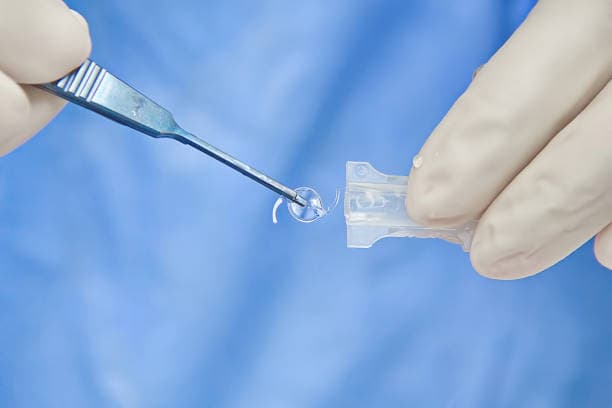
Laser Blended Vision
Laser Blended Vision Surgery is an innovative procedure designed to address presbyopia, the age-related loss of near vision, as well as other refractive errors like myopia (nearsightedness) and hyperopia (farsightedness). This advanced technique combines the precision of laser eye surgery with the concept of monovision, where one eye is optimized for distance vision and the other for near vision. The procedure uses a femtosecond laser to create a detailed flap on the cornea, followed by an excimer laser to reshape the corneal surface, adjusting the focus of each eye accordingly. The aim is to create a seamless blend of vision, providing a smooth transition between near, intermediate, and distance vision.
Patients undergoing Laser Blended Vision Surgery often experience a significant reduction in their dependence on glasses or contact lenses, especially for reading and other close-up tasks. The recovery period is typically quick, with most patients noticing improvements in their vision within a few days. This procedure offers a tailored solution for those seeking a more flexible and convenient alternative to multifocal lenses or traditional monovision correction. Consulting with an eye specialist is essential to determine if Laser Blended Vision Surgery is the right option, taking into account individual vision needs and eye health.
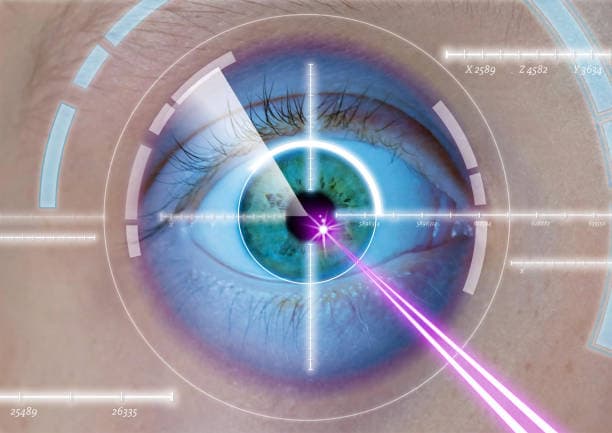
Pan Retinal Photocoagulation
Pan Retinal Photocoagulation (PRP) is a laser treatment primarily used to manage advanced diabetic retinopathy and other retinal conditions involving abnormal blood vessel growth. During the procedure, an ophthalmologist uses a laser to create small, controlled burns on the peripheral retina. These burns help reduce the oxygen demand of the retina, thereby inhibiting the growth of abnormal blood vessels that can lead to vision loss. PRP is typically performed in an outpatient setting and may require multiple sessions to treat the entire retina comprehensively.
The primary goal of PRP is to prevent further retinal damage and preserve central vision by sealing off the abnormal vessels and reducing the risk of bleeding and retinal detachment. While the procedure is generally safe, patients may experience temporary side effects such as blurred vision, discomfort, or increased eye pressure. Long-term outcomes are favorable, with many patients experiencing stabilization or improvement in their vision. PRP remains a cornerstone in the management of proliferative diabetic retinopathy and other retinal vascular diseases, offering a valuable treatment option to prevent severe vision loss. Consulting with an eye specialist is essential to determine the most appropriate treatment plan based on individual eye health and condition severity.
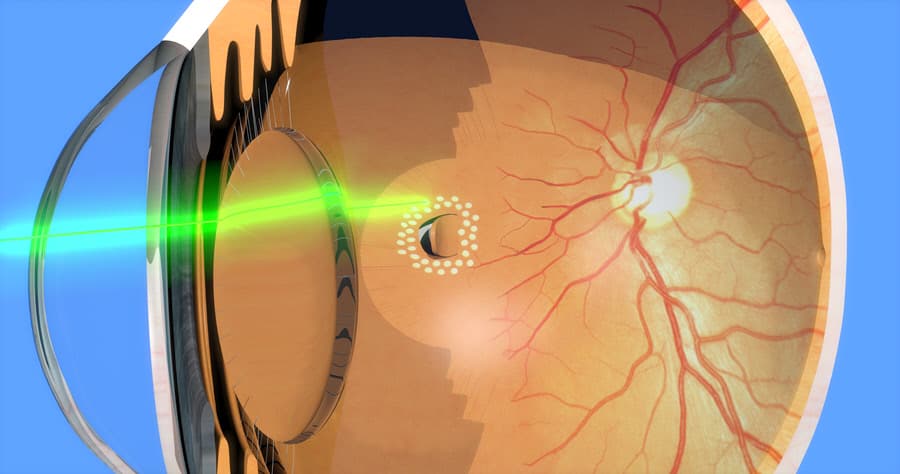
Selective Laser Trabeculoplasty
Selective Laser Trabeculoplasty (SLT) is a minimally invasive laser procedure used to lower intraocular pressure in patients with open-angle glaucoma. This procedure targets the trabecular meshwork, the drainage system within the eye, to enhance fluid outflow and reduce pressure. During SLT, a low-energy laser is selectively applied to specific cells within the trabecular meshwork, stimulating a biological response that improves drainage without causing significant damage to surrounding tissues. The treatment is typically performed in an outpatient setting and takes only a few minutes.
One of the main advantages of SLT is its safety profile. Because it selectively targets pigmented cells, it causes minimal thermal damage, making it repeatable if necessary. Patients usually experience little to no discomfort during the procedure, and the recovery time is short. SLT can effectively reduce intraocular pressure, often delaying or eliminating the need for glaucoma medications. However, it may take several weeks for the full effects to be realized, and not all patients respond to the treatment equally.
Overall, SLT offers a valuable, non-invasive option for managing open-angle glaucoma, enhancing fluid drainage and controlling intraocular pressure. Consulting with an eye specialist is essential to determine if SLT is suitable based on individual eye health and treatment needs.
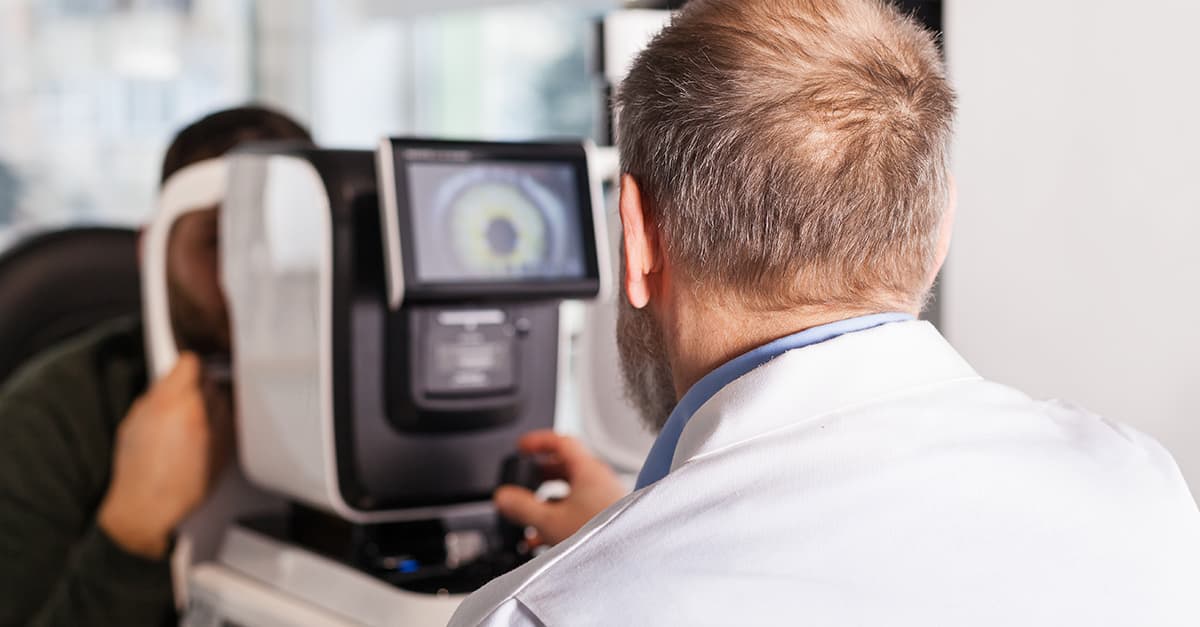
Conclusion
In conclusion, various types of laser eye surgeries, including LASIK, PRK, SMILE, and LASEK, offer effective solutions for correcting vision problems such as myopia, hyperopia, and astigmatism. Each procedure utilizes advanced laser technology to reshape the cornea, improving how light is focused onto the retina and reducing dependence on glasses or contact lenses. Consulting with an eye specialist is essential to determine the most suitable procedure based on individual eye health and vision needs, ensuring the best outcomes for improved vision and quality of life.
Read More